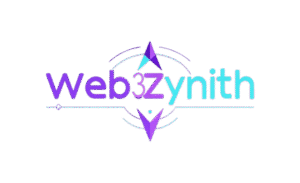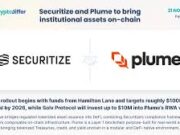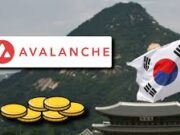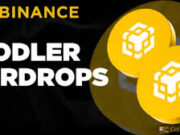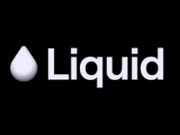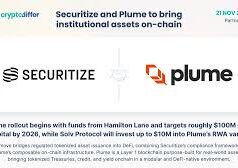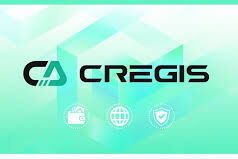In the rapidly evolving cryptocurrency landscape, few moments resonate louder than when a stablecoin reaches an unprecedented valuation. This week, Tether’s USDT, the most widely used dollar-pegged stablecoin, officially broke the $170 billion market capitalization mark for the first time. According to CoinGecko, USDT’s market cap is approximately $170,268,178,341, with around $102.7 billion traded in the past 24 hours. (CoinGecko)
This isn’t just a vanity metric; rather, it underscores deepening demand for stability amid crypto’s volatility. Below, we explore what this milestone means—covering USDT’s history, financials, risks, and its impact on the larger crypto ecosystem.
A Brief History: How USDT Became the Stablecoin Standard
USDT, originally launched in 2014 by Tether Limited (initially Realcoin), was conceived as a bridge between fiat currency (USD) and the crypto world. Its founders—Brock Pierce, Reeve Collins, and Craig Sellars—intended it to be 1:1 backed by U.S. dollars or equivalent assets so that users could move funds with fewer frictions and less exposure to crypto’s infamous price swings. (Wikipedia)
Over time, USDT’s usage expanded from niche liquidity pools to being one of the top trading pairs across nearly every major exchange. Its presence across multiple blockchains—Ethereum, Tron, Solana, among others—helped facilitate high-speed, low-cost transfers, especially in regions with underdeveloped banking infrastructure. Its ubiquity established it as the default stablecoin for traders, DeFi participants, and institutions alike.
Breaking Down the Numbers: What Does $170 Billion Really Signify?
- Market Cap & Volume: As noted, USDT’s market cap has crossed $170 billion, per CoinGecko, with a 24-hour trading volume exceeding $102.7 billion. (CoinGecko)
- Reserves & Attestation: In its Q4 2024 attestation (by BDO), Tether reported net profits over $13 billion, record U.S. Treasury holdings (around $113 billion), and an excess reserves buffer of over $7 billion. (Tether)
- Backing & Transparency: Tether’s Reserves Report as of December 31, 2024, shows that the value of the assets backing USDT tokens exceeds liabilities by about $7.087 billion, indicating a positive reserve buffer. (Contentful)
These data points suggest that USDT is backed by a diversified mix of reserves, with large exposure to U.S. Treasuries and cash equivalents—an important foundation for peg stability and credibility.
Why This Growth Matters for the Crypto Ecosystem
- Liquidity & Market Confidence
When a stablecoin like USDT expands in market cap and maintains high trading volume, it signals strong entry of capital into the crypto space. Traders often move into stablecoins to hedge volatility or await better entry points. USDT’s rise thus functions as both thermometer and barometer of broader investor sentiment. - Global & Institutional Adoption
In many emerging markets with volatile local currencies or limited banking access, USDT serves as a digital proxy for the U.S. dollar. Meanwhile, as crypto infrastructure matures, institutions are increasingly comfortable using stablecoins for cross-border transactions, treasury operations, and as liquidity tools. - Regulatory Pressures & Compliance Dynamics
As USDT grows, so does scrutiny. Regulatory frameworks—such as the U.S. GENIUS Act—are pushing for stablecoins to maintain stronger transparency, full asset backing, and regular auditing. Tether’s moves (including attestation reports and reserve disclosures) are responses to these pressures. (Financial Times) - Competitors & Market Share
Rivals like USDC (Circle) are major players but lag behind in sheer market cap. As of early September 2025, the global stablecoin market was nearing $300 billion, with USDT leading by a substantial margin. (FN London)
Challenges & Risks Ahead
- Peg Confidence & Redemption Risk: If many holders want to redeem USDT for USD simultaneously, the reserves need to be sufficiently liquid. Any mismatch or delay could risk stress on the peg.
- Regulatory Uncertainty: Different jurisdictions have different rules for stablecoins. Tether must navigate evolving global regulations, which could impose stricter audits, reserve composition rules, or issuer licensing. GENIUS Act in the U.S. is one example. (Financial Times)
- Transparency & Audit Depth: While Tether has released attestation reports and reserve breakdowns, full independent audits (with granular, real-time data) are still a demand among skeptics.
- Competition & Innovation Risk: Decentralized stablecoins (e.g., algorithmic ones), regulatory-compliant ones, or stablecoins backed by different asset classes may erode USDT’s dominance if they offer advantages in cost, speed, or regulatory safety.
What Comes Next: Projections & Opportunities
Given current trends, several likely developments in the coming 6-12 months:
- USDT could reach $200 billion in market cap if investor confidence, institutional inflows, and regulatory clarity continue improving.
- Tether’s planned U.S.-based stablecoin USA₮/USAT, designed to comply with U.S. regulations, may offer a vehicle for U.S. users and institutions seeking fully regulated stablecoins under the GENIUS Act. (Barron’s)
- More transparency, more frequent reserve disclosures, and possibly more external audits will become standard as regulation tightens.
- Use cases beyond trading—remittances, DeFi, payments in cross-border commerce—may further cement USDT’s role in the financial system.
Conclusion: Why USDT’s $170B Mark Is More Than Just a Number
USDT’s breach of the $170 billion market cap is a pivotal milestone. It reflects not only the growing scale of stablecoins but also a maturing crypto ecosystem increasingly tied to traditional finance. While there are risks, the financials (latest attestation, reserve buffers, U.S. Treasury holdings) show a strong foundation. For traders, investors, and observers, this moment is a vote of confidence in stablecoins as more than temporary tools—they may be infrastructure.
Sources:
- Tether’s Q4 2024 Attestation Report: net profits, U.S. Treasury exposure, reserve buffer. (Tether)
- Live market cap & trading volume for USDT via CoinGecko. (CoinGecko)
- Global stablecoin market and competition figures: FN London on USDT vs USDC. (FN London)
- Regulatory developments (GENIUS Act, USAT launch) and Tether’s U.S. strategy. (Reuters)
